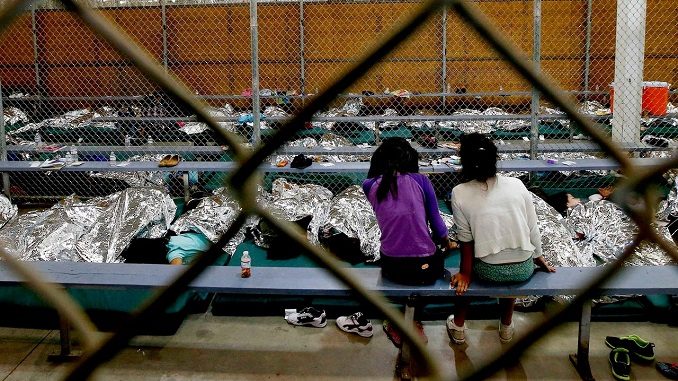
The White House is planning to spend most of the would-be migrants to another Central American nation to seek refuge there.
According to Reuters, regulations proposed by the Departments of Justice and Homeland Security would authorize immigration judges at the southern border to send asylum-seekers to one of three countries — Guatemala, El Salvador or Honduras — as long as it was not their homeland. They could apply for asylum there rather than in the United States.
The rules do not apply to unaccompanied minors, who would be held in government detention until they could be placed with a relative in the United States or another caretaker while their status is determined. The rules would allow other migrants to remain in the United States if they could convince an immigration officer that they were likely to be persecuted, or tortured, in the Central American country where they were to be sent to apply for asylum.
That would be very difficult to prove for a migrant who would have little or no time to gather evidence about conditions in the Central American nation and, in nearly all cases, would not have access to a lawyer, said Richard Caldarone, an attorney with the Tahirih Justice Center, a support group for immigrant women and girls.
“The obvious result … is that almost no one will satisfy the (government’s) standard,” Caldarone said. He said the proposal “makes a mockery of our national obligation not to return asylum-seekers to violence and persecution” and would be challenged in court.
In their filings, the federal agencies said the changes would ease burdens on an overtaxed U.S. asylum system that has a backlog of 474,000 cases — more than half of them from the three Central American countries — awaiting final decisions in immigration courts, with an average review time of more than two years.
The third-country deportations would also “facilitate ongoing diplomatic negotiations with foreign countries regarding migration issues, including measures to control the flow of aliens into the United States,” the agencies said.
The regulations cited “asylum cooperative agreements” that the Trump administration has negotiated with Guatemala, El Salvador, and Honduras, certifying that each nation provides a “full and fair procedure” for judging asylum claims. The agencies did not provide any evidence to support those assessments, however, and one immigration analyst said the record so far is questionable.
Guatemala was the first nation to be certified by the United States, and “there is a long way to go for Guatemala to have a fully functioning asylum system,” said Julia Gelatt, a policy analyst with the nonprofit Migration Policy Institute.
Caldarone said the Guatemalan asylum system had only three staff members who review applicants and was “barely functional.”
The restrictions already in effect make migrants ineligible for asylum if they have passed through Mexico or another nation before reaching the southern border. A federal judge in San Francisco blocked those changes in July, a week after they took effect, saying U.S. law allows individuals to apply for asylum regardless of the route they traveled. But the Supreme Court voted 7-2 in September to allow the restrictions to be enforced while the case proceeds through the courts.
Gelatt said the newly proposed rules would go beyond the current restrictions by authorizing immigration judges to prevent migrants from seeking any type of legal refuge in the United States because of conditions in their homeland.




Be the first to comment